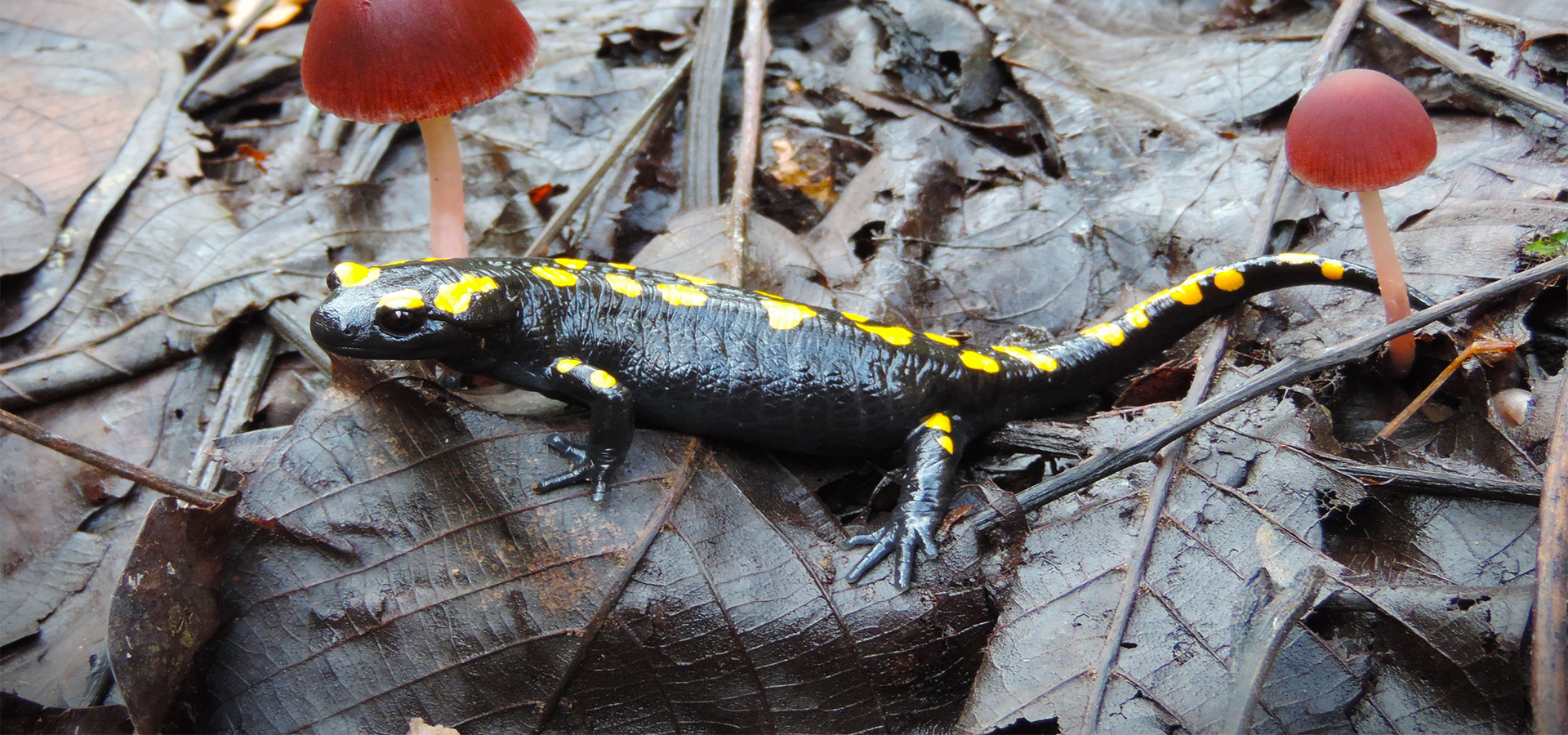
LEBANON HIDDEN WORLD (Part 1): REPTILES & AMPHIBIANS
- May 19, 2025
- 0
Despite its modest size of just 10,452 km², Lebanon is one of the most biodiverse countries in the Old World. Regarding fauna, Lebanon is home to over 60 species of mammals. Some, like the Syrian Bear, are now locally extinct, while others, such as the Long-eared Hedgehog, are still being documented today. The country also holds global importance as the second-largest corridor for bird migration, with over 400 bird species recorded. Additionally, Lebanon hosts thousands of invertebrate species—including insects, mollusks, and arachnids—and an equally rich marine ecosystem, much of which remains unexplored and undocumented. Last but not least, 63 species of reptiles and amphibians are among the most underrated and misunderstood groups of animals in Lebanon. What reptile and amphibian species call Lebanon home? Why are they important? What threats do they face? And how should we coexist with them?
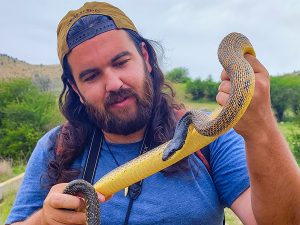
Lebanon is home to 8 species of amphibians, all of which are suffering as a result of climate change, as well as pollution of the water bodies they need for breeding. These species include two species of the Salamandridae family, the Near Eastern Fire Salamander (Salamandra infraimmaculata) -Cover image-, a vibrant lizard-like amphibian commonly encountered on rainy nights. And the Southern banded newt (Ommatotriton vittatus) has already disappeared in some parts of Lebanon in the past two decades due to its close association with the water bodies in their areas and limited active period. The other six species of amphibians are frogs and toads (Anurans), which include the common Levant water frog (Pelophylax ridibundus bedriagae), Two Tree frogs (Hyla savignyi, Hyla felixarabica), and the Green Toad (Bufotes sitibundus). This category also includes the near-threatened Caucasian toad (Bufo verrucosissimus) and the currently researched Syrian Spadefoot Toad (Pelobates syriacus).

Reptiles of Lebanon are 55 species that are further split into turtles, lizards, and snakes (no crocodilians or tuataras).
Turtles represent the smallest group of reptiles in Lebanon, with only six recorded species, five of which are internationally threatened according to the IUCN Red List. Among them are three marine species: the Green Turtle (Chelonia mydas) and the Loggerhead Turtle (Caretta caretta), both of which nest on the remaining sandy beaches of the Lebanese coast, and the Leatherback Turtle (Dermochelys coriacea), which occasionally visits local waters. Another two species inhabit freshwater ecosystems: the widespread Balkan Pond Turtle (Mauremys rivulata) and the rare, threatened Nile Softshell Turtle (Trionyx triunguis), which is nearing extinction in Lebanon. The last species of this group is the single terrestrial species, the Greek Tortoise (Testudo graeca), a vulnerable species that often falls victim to illegal trade or being trapped as a garden pet.

Lizards are 21 species that belong to eight families, which include: geckos, legless lizards, chameleons, worm lizards, agamas, skinks, and true lizards, with the last two families having the most species. Lacertids (true lizards) include some common species, such as the Lebanon Lizard (Phoenicolacerta laevis) and the Snake-eyed Lizard (Ophisops elegans), as well as some threatened and rare ones like the Kulzer’s Lizard (Phoenicolacerta kulzeri) and the endemic Fraa’s Lizard (Parvilacerta fraasi), both of which inhabit Lebanese highlands. The second big family of lizards in Lebanon is the skinks, which includes the smallest reptile in Lebanon, the Ruppel’s Skink (Ablepharus rueppelli), as well as some big species such as the Schneider’s Skink (Eumeces schneideri). This family also includes a threatened limbless species called Gunther’s Cylindrical Skink (Chalcides guentheri). The largest lizard species that inhabits Lebanese wilderness is the Levant Glass Lizard (Pseudopus apodus levantinus), a gentle giant that is often killed by locals, mistaken for a snake due to its odd appearance.
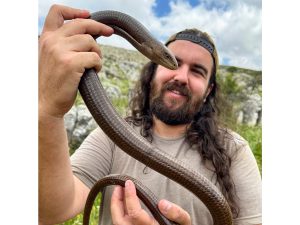
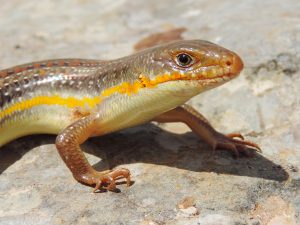
Geckos in Lebanon are also victims of superstitions and myths, especially the House Gecko (Hemidactylus turcicus) that is believed by many locals to be toxic and “cause albinism or vitiligo”, despite being a friendly, bug-eating roommate. Other lizards, such as the Common Chameleon (Chamaeleo chamaeleon), are not that common anymore as a result of pesticide overuse and other extreme agricultural actions.
Lastly, Lebanon is home to 26 species of snakes belonging to seven different families, which can be broadly categorized by their venom potential. The majority—18 species—are non-venomous, posing no threat to humans. Five species are rear-fanged and mildly venomous, typically harmless to humans but capable of subduing small prey. Only three species are considered medically significant and highly venomous, requiring caution and awareness due to their potential danger in rare encounters. All of them play essential roles in controlling rodent and insect populations.
The non-venomous snakes include some of the most common and well-known species, such as the Large Whip Snake (Dolichophis jugularis), which happens to be the longest Lebanese snake with adults that may exceed 2 meters, the Coin Marked Snake (Hemorrhous nummifer), the most common snake in urban areas, and most confused with the venomous Palestinian Viper. This category also includes the Levant Rat Snake (Elaphe druzei), which is considered one of the rarest and most enigmatic snakes in the region (Intro image). Other species, such as the recently documented, worm-like, Simon’s Blind Snake (Letheobia simoni), which is the smallest snake in Lebanon, also belong to this category.
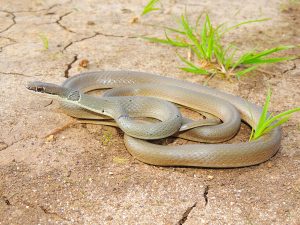
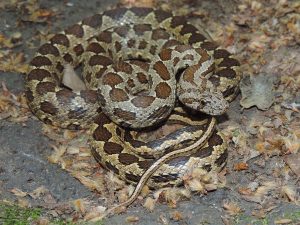
The mildly venomous snakes found in Lebanon are all rear-fanged, meaning their fangs are located toward the back of the mouth, making bites to humans rare and generally ineffective. Their venom is of low toxicity and rarely requires medical attention, posing little to no threat to people. This group includes some notable species, such as the Eastern Montpellier Snake (Malpolon insignitus), one of Lebanon’s larger native snakes, renowned for preying on other reptiles, including venomous snakes. Others in this category are either rarely encountered, like Müller’s Snake (Micrelaps muelleri), or understudied, such as the Schokari Sand Racer (Psammophis schokari), which is currently being surveyed to better understand its distribution and behavior in the region
The last category of snakes is the highly venomous ones, all three of which belong to the Viperidae family. The Palestinian Viper (Daboia palaestinae), which is the most common of the three with the highest number of venomous bites in Lebanon, however, no deaths from this species have been reported. The largest of the vipers in Lebanon tends to be the Blunt-nosed Viper (Macrovipera lebetina), which, despite being robust, is often docile and prefers isolated areas far from humans, such as river valleys. The last species is a small, endangered mountain-dwelling snake, the Lebanon Mountain Viper (Montivipera bornmuelleri). It is the smallest and least venomous of the three species, with almost no documented bite cases since it only inhabits high elevations with very little human contact.
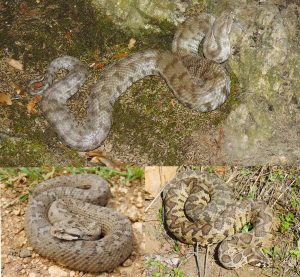
All reptiles of Lebanon are threatened by habitat loss, invasive species, especially feral cats, and being killed by locals out of fear and a lack of knowledge.
It’s important to understand that snake venom is primarily a tool for hunting prey, not for attacking humans, which makes snakes one of the most efficient natural pest controls. Most venomous bites occur when people try to handle, harm, or kill a snake, often due to fear or misinformation. In reality, snakes prefer to avoid humans, and bites are easily preventable with basic awareness and responsible behavior outdoors. Simple safety precautions—like wearing sturdy hiking boots and using a stick to check under rocks or in tall grass, especially during warmer months—can greatly reduce the risk of a snake encounter. In most cases, if you come across a snake, it will flee before you even get close. If the snake hasn’t noticed you, just walk away calmly. Snakes do not chase or attack humans. If you must encourage a snake to move, do so by poking it gently from a safe distance. And in the unlikely event of a venomous bite, avoid the common myths seen in movies: do not try to suck out the venom or cut the wound. These actions can make the situation worse. Instead, stay calm, call for help, and head to the nearest medical center. Snakebite fatalities are extremely rare, and timely medical attention is highly effective.
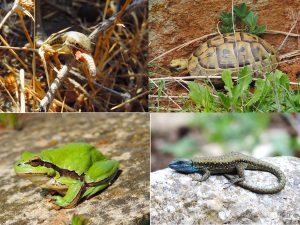
Article prepared by: Rami Khashab – Herping Lebanon
For more info or snake relocation, call don’t kill +96171316725











